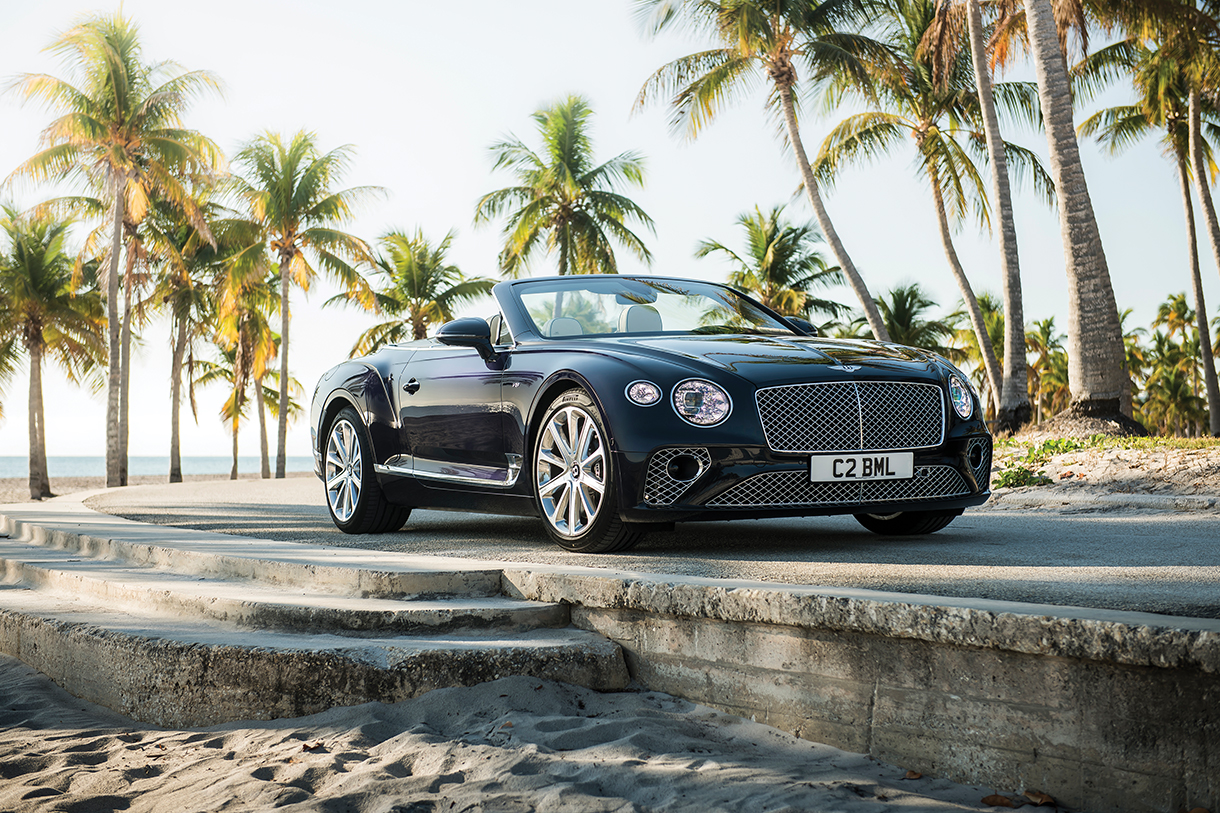
Summertime Specials
The allure of a sunny day, an empty road, and a quick convertible can be irresistible. This short list of desirable new drop-tops is ready to answer the call.
Bentley Continental GT V8 Convertible
With nearly 100 years of racing experience under the bonnet, it’s no surprise that Bentley’s 2020 Continental GT Convertible goes from 0 to 60 mph in under 4 seconds and can hit 198 mph. Speed builds quietly in this car: It feels settled and serene even at 140 mph on an Arizona highway. At over 5,100 pounds, you’d expect the Bentley to be a comfortable tourer, yet it also seems to shed some weight as it takes on the mountain roads outside Sedona. All-wheel drive, an 8-speed dual-clutch automatic transmission, air suspension, massive brakes, and 542 hp (and 568 ft lbs of torque, available from 2,000 rpm up to 4,500) transform this grand tourer into a turn-gobbling sports car, albeit one with optional massaging seats and a killer 2,200-watt Bang & Olufsen audio system. Four driving modes are available: Comfort, Sport, Custom, and Bentley, which ups the suspension, engine, and transmission mappings to make the car more, say, “Bentley-like,” as the Continental GT effortlessly dives into every curve. Comfort mode is exactly that, Sport mode tightens up the chassis, and Custom allows you to adjust all settings to your own preferences.
From the outside, the new design lengthens the car, puts more muscle in the rear panels, and adds quad exhaust tips at the back for a stronger, sportier look. Drop the four-layer top, at speeds up to 30 mph, to better hear the 4.0-liter twin-turbo V8’s burble emanating from those pipes. Even with its slightly longer wheelbase, the new GT is still 150 pounds lighter than the previous car, thanks to aluminum body panels; it’s also lower, with a shorter front overhang and wider rear track.
Inside, Bentley made sure the convertible is as quiet as the coupe on which it’s based. Of course, the heated and cooled seats, with the finest hand-stitched leather, are infinitely adjustable, and optional neck blowers can cool or warm you as you choose. The three-position center console rotates to show either a standard chrome-surround gauge package, the multi-media display, or a flat panel that seamlessly blends with the rest of the dash. If the standard V8 isn’t enough, the 6.0-liter twin-turbo V12, with 626 hp and 664 ft lbs of torque, adds a bit more top-end speed. From $222,700; bentleymotors.com —David Keith
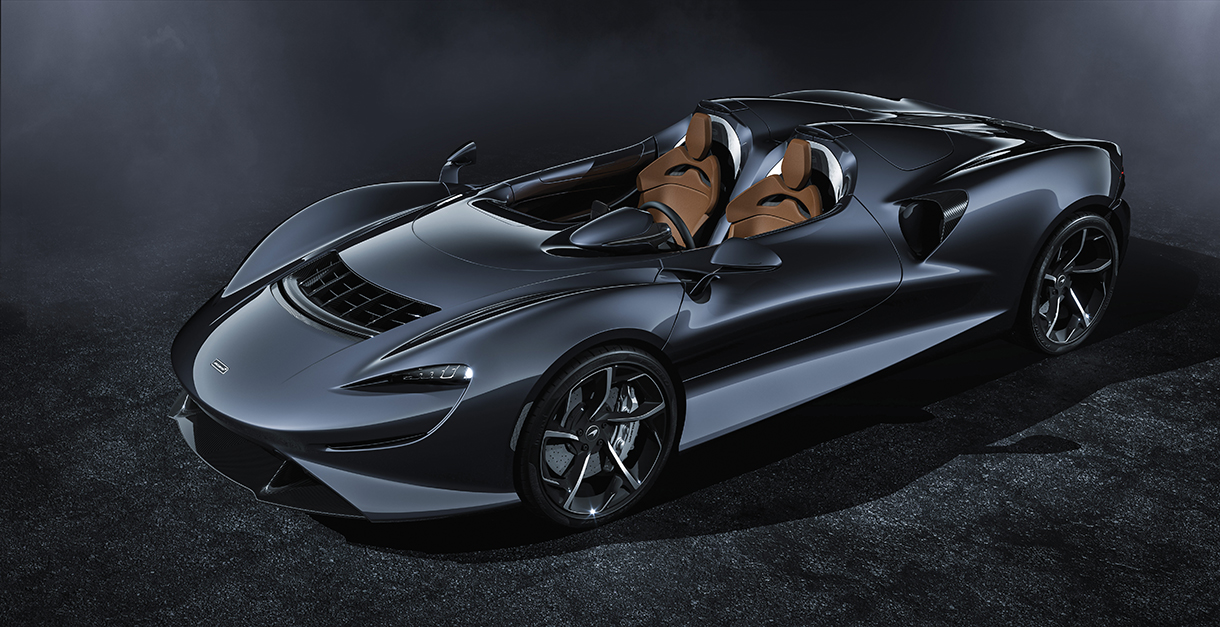
McLaren Elva
In this special collection of convertibles, the 2020 Elva stands apart: It’s the only one with no roof at all, leaving the task of battling the elements to advanced aerodynamics alone. The car’s active aero management system relies on a front deflector to direct air up and over the cockpit, changing its angle of attack according to how fast the car is traveling. (The Elva can also be ordered with a windshield, an item that doesn’t make the list of standard features.)
Speaking of fast … well, the Elva is fast. Power comes from McLaren’s familiar twin-turbocharged 4.0-liter V8; in this application, the engine creates 804 hp and 590 ft lbs of torque. The sprint to 62 mph is over and done in fewer than 3 seconds, courtesy of a super-smart launch control system and a lightning-quick, dual-clutch automatic transmission routing power to the rear wheels. Top speed is yet to be confirmed, but should be in excess of 200 mph. The lightest road car currently offered by McLaren, the Elva shares much with its siblings, including three driving modes that control the powertrain and chassis settings. There’s even a variable drift control setting for brave souls who enjoy kicking the tail out. The catch: Only 249 units will be offered before production grinds to a halt, so it’s time to act fast. $1.7 million; cars.mclaren.com
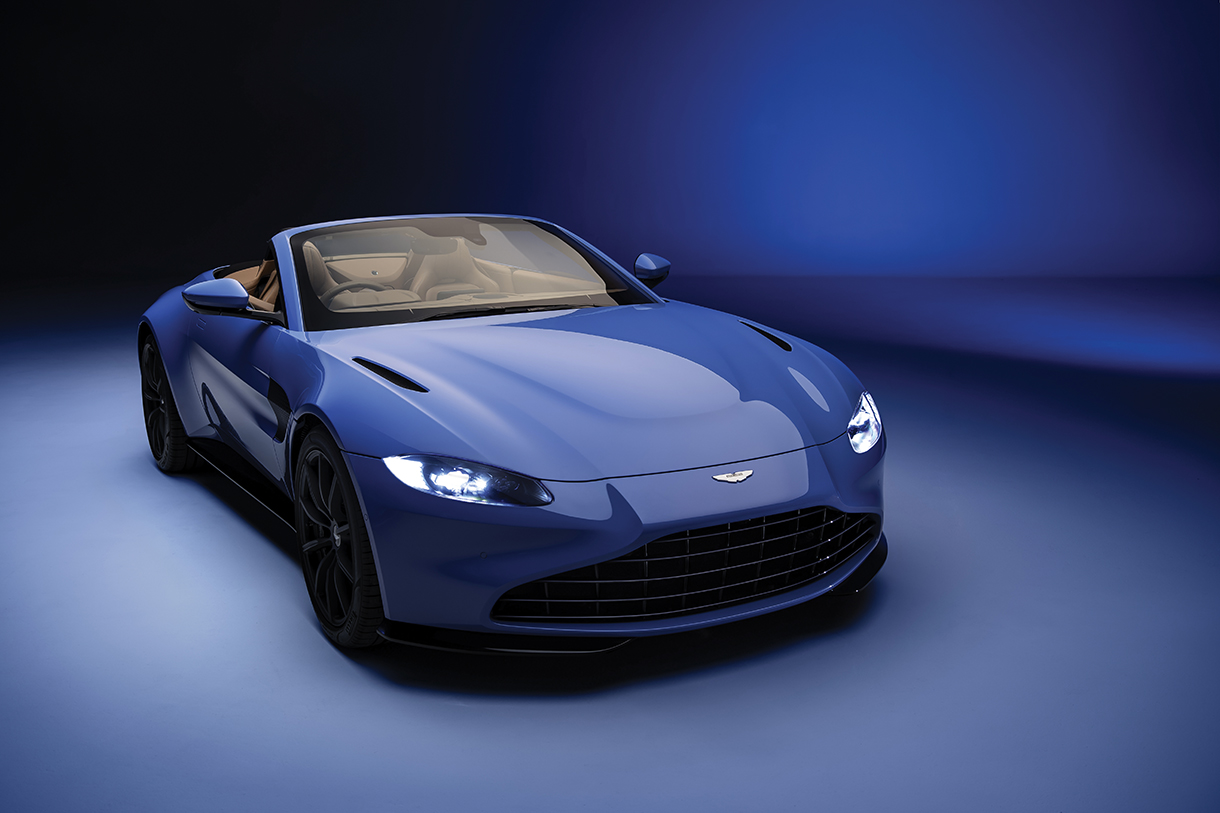
Aston Martin Vantage Roadster
Two years after the launch of the widely acclaimed coupe version, the 2020 Vantage Roadster makes its presence felt in the venerable brand’s lineup. The convertible, naturally, shares much of its architecture and engineering with the fixed-roof model, but key revisions have been made to ensure levels of performance remain consistent, even with the fabric top folded away.
Power comes from a twin-turbocharged 4.0-liter V8 engine, supplied by Mercedes-AMG, which generates 503 hp and 505 ft lbs of torque. This mechanical masterstroke is linked to an 8-speed automatic transmission that drives the rear wheels; three different drive modes (Sport, Sport+, and Track) and paddle shifters provide the capability to personalize the drive experience. Although the convertible weighs some 130 pounds more than the coupe, the sprint to 60 mph takes only a scant 3.7 seconds and terminal velocity roars into focus at 190 mph, provided the roof is up. The process of going from top up to down and vice-versa takes just under 7 seconds and can be performed at speeds of up to 31 mph.
The roadster shares its race-bred adaptive suspension system, electronic rear differential, and torque vectoring system with the coupe. But the stability control system and rear dampers feature unique software settings to give the convertible a dynamic character all its own. $161,000; astonmartin.com
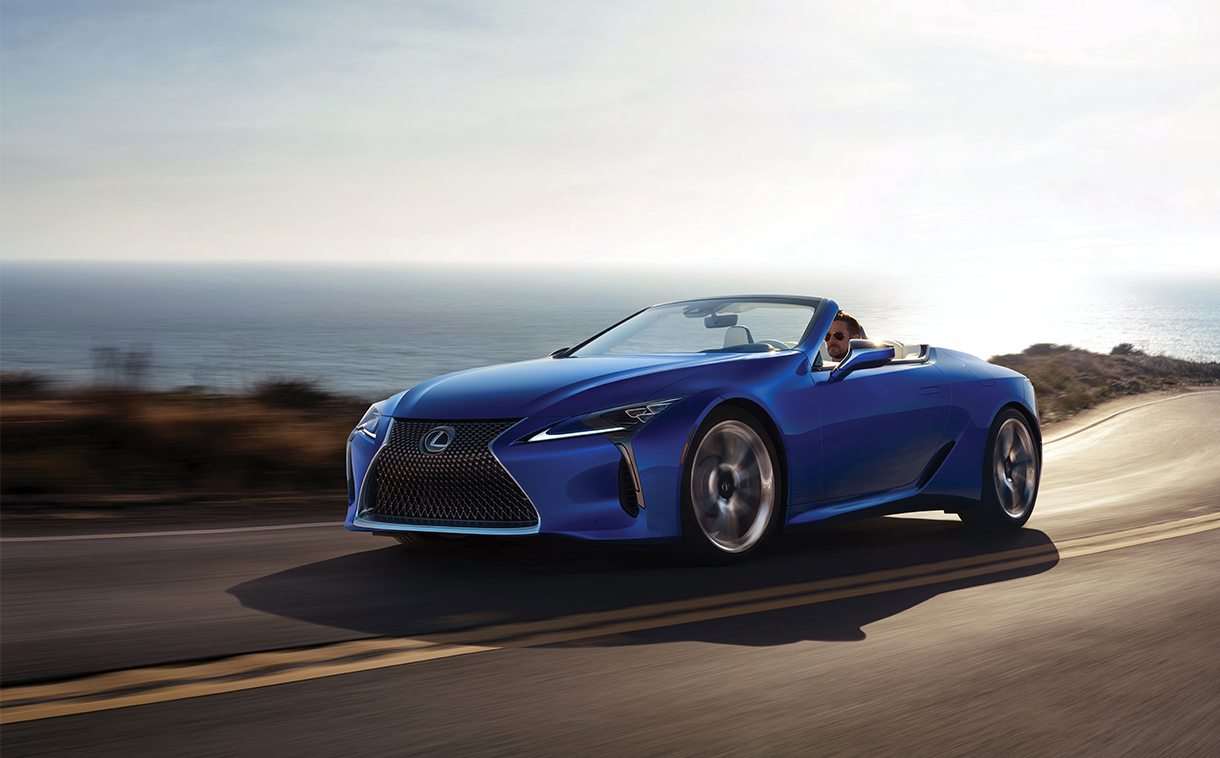
Lexus LC 500 Convertible
Seven-odd years ago, Lexus began showing a seemingly endless array of strikingly beautiful concept cars at various automotive gatherings around the world. At the time, onlookers nodded in approval, but remained skeptical that the models would ever go into production. Yet here we have just the latest example of the brand’s design aesthetic—the 2021 LC 500 Convertible—a rolling piece of art soon to be available for order. Based on the Lexus LC 500 coupe, the convertible features a naturally aspirated 5.0-liter V8 with 471 hp and 398 ft lbs of torque. In this select group of high-performance roadsters, these numbers may seem on the light side—but the Lexus should certainly be quick enough to make an impression. Power is sent to the rear wheels through a 10-speed automatic transmission and the sprint from 0 to 60 mph should consume around 5 seconds.
The LC 500 Convertible is some 225 pounds heavier than the coupe, but it nevertheless features near perfect 50/50 weight distribution, front to back, and modified suspension tuning to create a unique driving experience. The lightweight fabric top can be raised or lowered in around 15 seconds at speeds of up to 31 mph. The climate-control system has been engineered to ensure a consistent cabin temperature, regardless of roof position, making this convertible an all-season adventurer. Price TBD; lexus.com
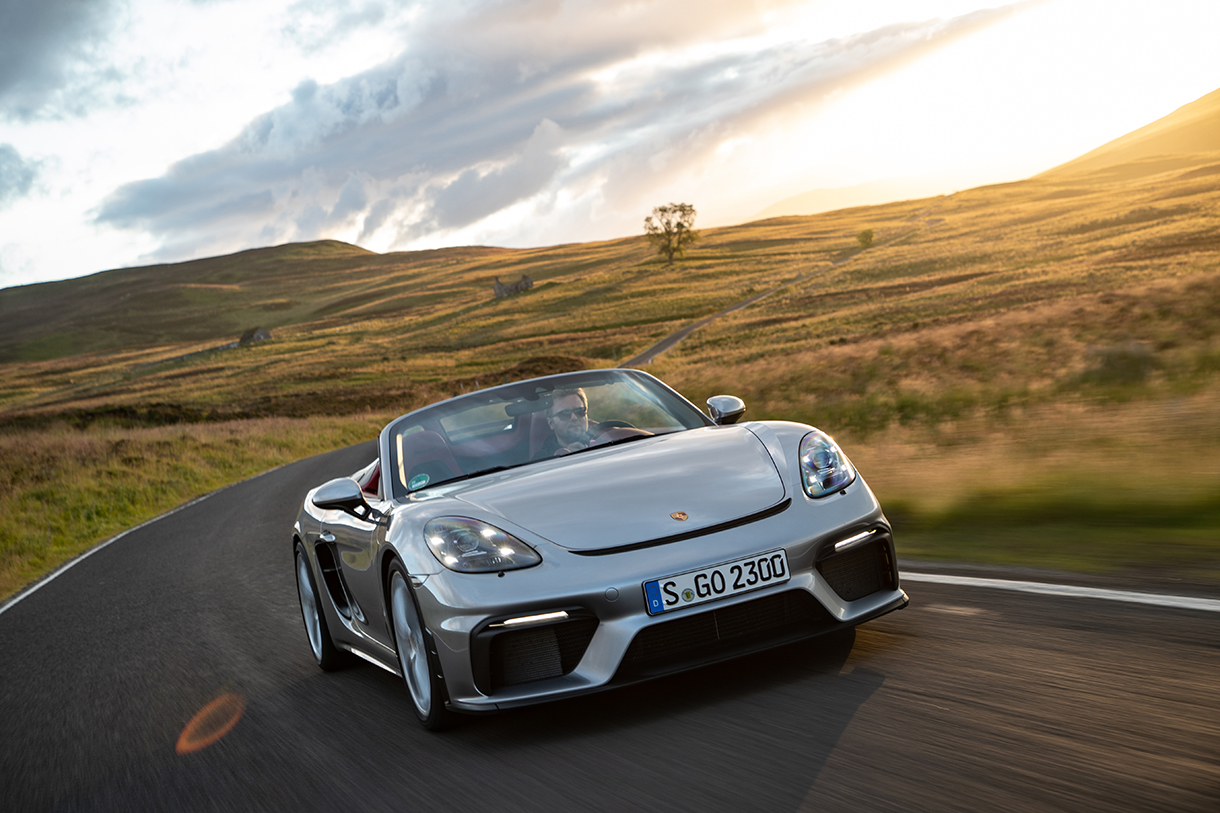
Porsche 718 Spyder
Some four years ago, the world of entry-level Porsche sports cars was sent into a tailspin. For the 2017 model year, the Boxster and Cayman twins received a new moniker (“718”) and new turbocharged 4-cylinder engines. As with most things Porsche-related, the change represented a step forward in terms of outright performance, but it was also seen as being a move sideways by many hardcore enthusiasts.
Now, with the arrival of the 2020 718 Spyder, the naturally aspirated 6-cylinder boxer engine is back and so is the kind of open-top performance that helped create the Porsche mystique with models such as the 356 and 550 Spyder. Motivation comes from the new 4.0-liter motor, which develops 414 hp and 309 ft lbs of torque, enabling the 718 Spyder to hit 60 mph in just 4.2 seconds.
Top speed is a supercar-like 187 mph, a staggering figure when you stop to consider the humble beginnings of the original Boxster. All of this performance arrives with tradition intact: The engine is still mounted in the middle of the car for optimum handling; the convertible fabric top is manually operated to save weight; and the only transmission currently available is a 6-speed manual (a 7-speed dual-clutch automatic is on the way).
In the interests of even higher levels of driver engagement, the 718 Spyder also features the latest trickery from the engineers situated in Stuttgart. In Sport mode, the adaptive suspension system lowers the car’s ride height, the torque vectoring system provides assistance in the corners, and the locking rear differential helps power the car out of those same corners. To cap it all off, the styling of the 718 Spyder strikes the perfect tone: a hint of nostalgia for this authentic 21st-century sports car. $96,300; porsche.com
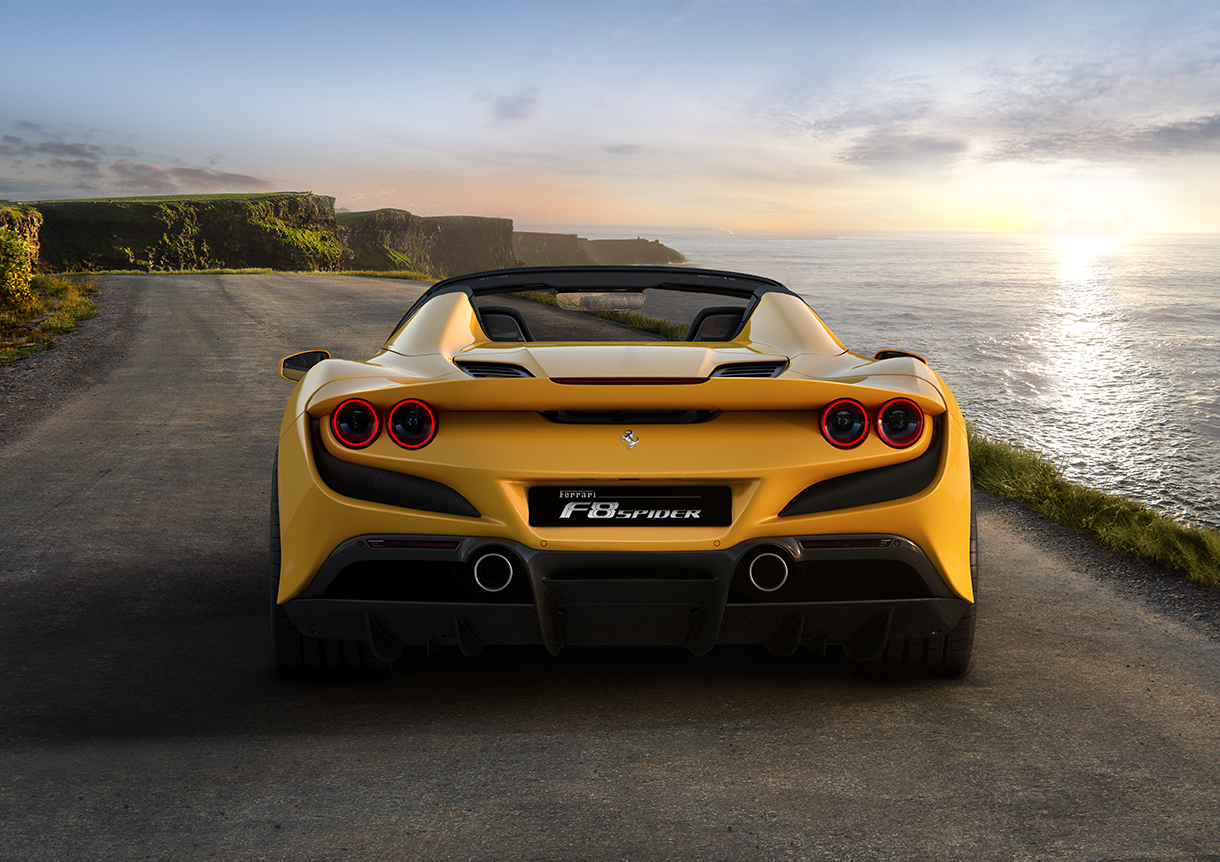
Ferrari F8 Spider
Somehow, inexplicably, the engineering team at Ferrari continues to set new benchmarks in performance with each new model released. One of the more recent examples is the 2020 F8 Spider—the car that replaces the 488 Spider, an absolute monster that superseded the 458 Spider, which is arguably one of the best supercars ever built.
The open-top version of the F8 Tributo, the Spider is powered by the same twin-turbocharged 3.9-liter V8, so the numbers are downright mind-blowing: 710 hp, 569 ft lbs of torque, a 0-to-60-mph time of 2.9 seconds, and a top speed of 211 mph. The engine is a derivative of the same V8 that’s been named International Engine of the Year for the past four years (2016–19); it’s blessed with instantaneous response, zero turbo lag, and a kick in the pants at 8,000 rpm that’s certain to terrify the average layman.
Under the surface, the Formula One–inspired engineering continues with a launch control system, electronic limited-slip differential, customizable vehicle dynamics settings, and the famed manettino switch to trigger the various drive modes. From a design standpoint, the F8 Spider is more beautiful than the brutalist 488 Spider, its sleeker aerodynamics also creating higher levels of downforce and outright performance, whether the folding hardtop is up or down. $297,250; ferrari.com




